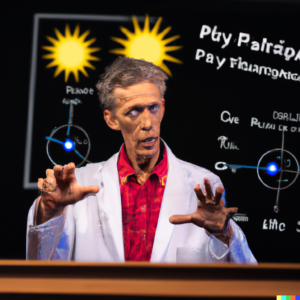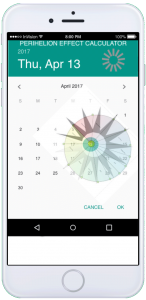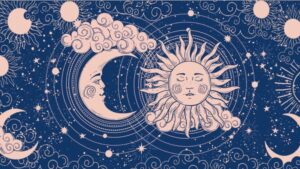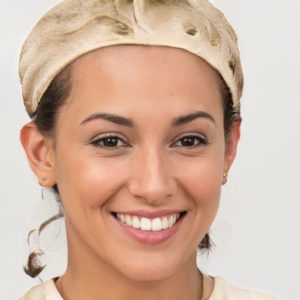Chronobiology
 Chronobiology is a field of science that examines periodic (cyclic) phenomena in living organisms and their adaptation to solar and lunar related rhythms.[1] These cycles are known as biological rhythms. “Chrono” pertains to time and “biology” pertains to the study, or science, of life. The related terms chronomics and chronome have been used in some cases to describe either the molecular mechanisms involved in chronobiological phenomena or the more quantitative aspects of chronobiology, particularly where comparison of cycles between organisms is required.
Chronobiology is a field of science that examines periodic (cyclic) phenomena in living organisms and their adaptation to solar and lunar related rhythms.[1] These cycles are known as biological rhythms. “Chrono” pertains to time and “biology” pertains to the study, or science, of life. The related terms chronomics and chronome have been used in some cases to describe either the molecular mechanisms involved in chronobiological phenomena or the more quantitative aspects of chronobiology, particularly where comparison of cycles between organisms is required.
Chronobiological studies include but are not limited to comparative anatomy, physiology, genetics, molecular biology and behavior of organisms within biological rhythms mechanics. Other aspects include development, reproduction, ecology and evolution.
Description
The variations of the timing and duration of biological activity in living organisms occur for many essential biological processes. These occur (a) in animals (eating, sleeping, mating, hibernating, migration, cellular regeneration, etc.), and (b) in plants (leaf movements, photosynthetic reactions, etc.). The most important rhythm in chronobiology is the circadian rhythm, a roughly 24 hour cycle shown by physiological processes in plants and animals. The term circadian comes from the Latin circa, meaning “around” and dies, “day”, meaning “approximately a day.” Many other important cycles are also studied, including:
- Infradian rhythms, which are cycles longer than a day, such as the annual migration or reproduction cycles found in certain animals or the human menstrual cycle.
- Ultradian rhythms, which are cycles shorter than 24 hours, such as the 90-minute REM cycle, the 4-hour nasal cycle, or the 3-hour cycle of growth hormone production.
- Tidal rhythms, commonly observed in marine life, which follow the roughly 12-hour transition from high to low tide and back.

History
A circadian cycle was initially discovered in the 1700s in the movement of plant leaves by the French scientist Jean-Jacques d’Ortous de Mairan (for a description of circadian rhythms in plants by de Mairan, Linnaeus, and Darwin see this page). In 1751 Swedish botanist and naturalist Carolus Linnaeus (Carl von Linné) designed a floral clock using certain diurnal species of flowering plants. By arranging the selected species in a circular pattern, he designed a clock that indicated the time of day by observing which flowers were open and which ones were closed. For example, he discovered that the hawk’s beard plant, opened its flowers at 6:30 am, whereas another species, the hawkbit, did not open its flowers until 7 am.
In 1860s, Karl Ernst von Baer wrote about the biological time and its difference in different species of animals.[2] His approach was further developed and experimentally studied by Jakob von Uexküll.
In 1924 Alexander Chizhevsky, graduate of Medical School at Moscow University, published interdisciplinary works: “Physical factors behind the process of history” and “Epidemiological catastrophes and periodic activity of the Sun” studying cycles in living organisms in connections with solar cycle and cycle of lunar phases. Chizhevsky developed a new discipline, Heliobiology, a branch of Astrobiology. In 1939 Chizhevsky was elected Honorary President of International Congress in Biological Physics, for his 1936 publication The Terrestrial Echo of Solar Storms, 366 pp. 1976, Moscow, (First published in 1936 in Russian. However, soon Chizhevsky was arrested by the Soviet government and exiled to Siberia under the dictatorship of Joseph Stalin. Chizhevsky’s publications were censored and his 1930s research of blood and electromagnetic parameters of erythrocytes in connection with cycles in human circadian system was banned; it was published in 1973, 40 years later. Chizhevsky’s 1928 publication “Influence of Cosmos on human psychoses” was censored in the Soviet Union, albeit in 2003 this work was referenced in Journal of Circadian Rhythms article.
The 1960 symposium at Cold Spring Harbor Laboratory seems to define the moment when researchers, as many women as men, from widely different fields discovered that they all were studying the same phenomenon. That well-attended meeting laid the groundwork for the field of chronobiology.
It was also in 1960 that Patricia DeCoursey invented the phase response curve, since one of the major tools used in the field.
Franz Halberg of the University of Minnesota, who coined the word circadian, is widely considered the “father of American chronobiology”. However, it was Colin Pittendrigh and not Halberg who was elected to lead the Society for Research in Biological Rhythms in the 1970s. Halberg wanted more emphasis on the human and medical issues while Pittendrigh had his background more in evolution and ecology. With Pittendrigh as leader, the Society members did basic research on all types of organisms, plants as well as animals. More recently it has been difficult to get funding for such research on any other organisms than mice, rats, humans and fruit flies.
More recently, light therapy and melatonin administration have been explored by Dr. Alfred J. Lewy (OHSU) and other researchers as a means to reset animal and human circadian rhythms. Humans can be morning people or evening people; these variations are called chronotypes for which there are various assessment tools and biological markers.
In the second half of 20th century, substantial contributions and formalizations have been made by Europeans such as Jürgen Aschoff and Colin Pittendrigh, who pursued different but complementary views on the phenomenon of entrainment of the circadian system by light (parametric, continuous, tonic, gradual vs. nonparametric, discrete, phasic, instantaneous, respectively; see this historical article, subscription required).
There is also a food-entrainable biological clock, which is not confined to the suprachiasmatic nucleus. The location of this clock has been disputed. Working with mice, however, Fuller et al concluded that the food-entrainable clock seems to be located in the dorsomedial hypothalamus. During restricted feeding, it takes over control of such functions as activity timing, increasing the chances of the animal successfully locating food resources.
Other fields
Chronobiology is an interdisciplinary field of investigation. It interacts with medical and other research fields such as jetlag, sleep disorders, endocrinology, geriatrics, sports medicine, space medicine and photoperiodism.
The unsubstantiated theory of biorhythms, which is said to describe a set of cyclic variations in human behaviour based on physiological and emotional cycles, is not a part of chronobiology.



